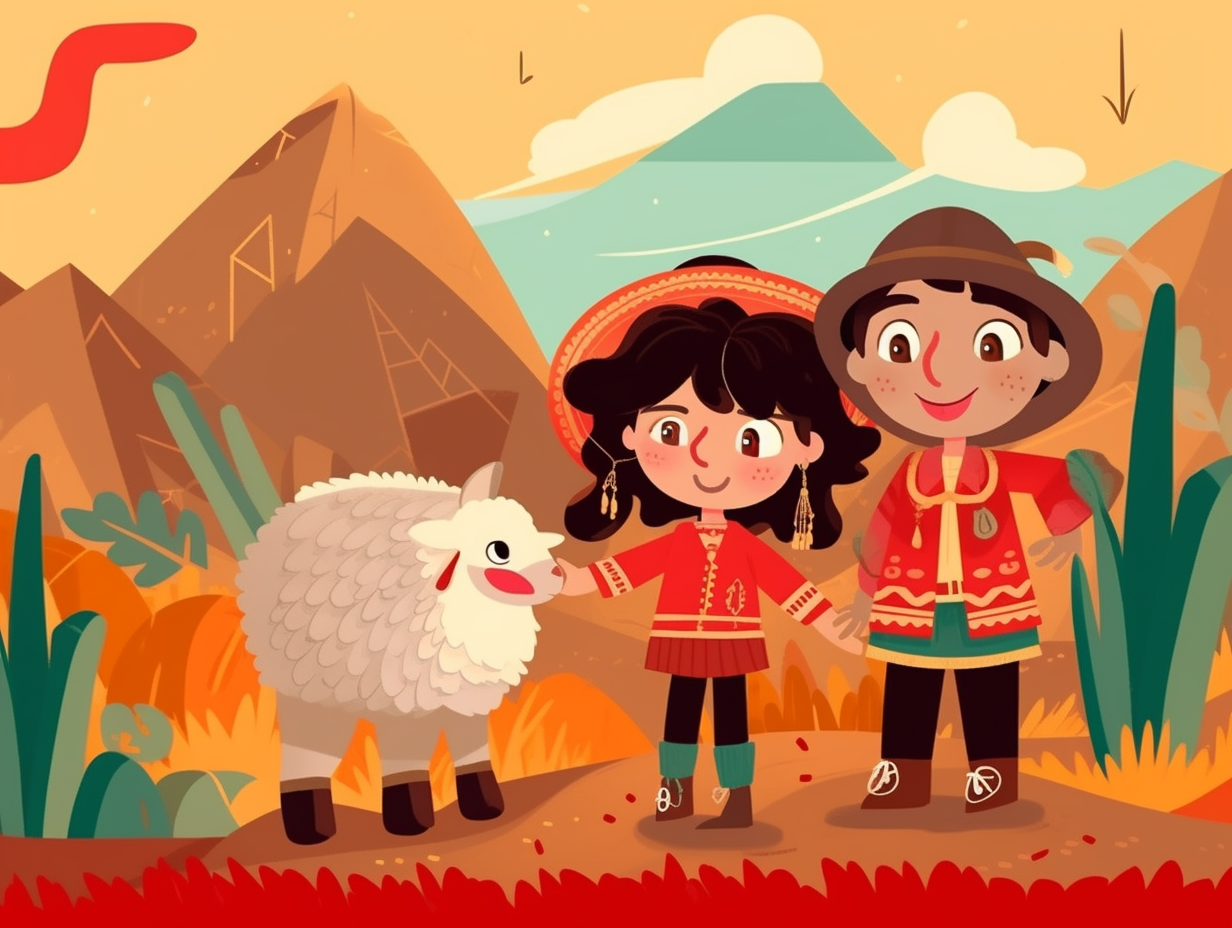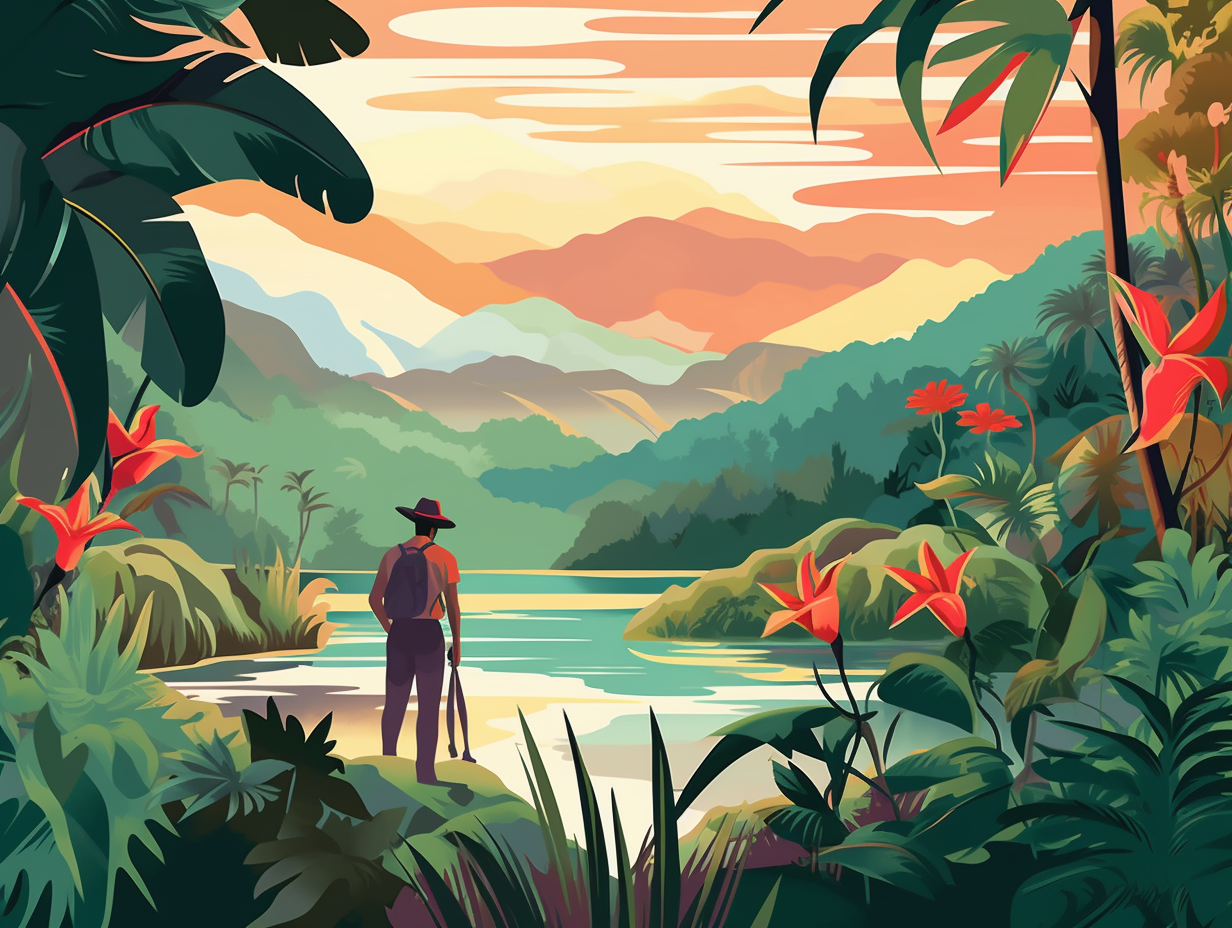Discover Peru: 12 Exciting and Educational Fun Facts for Kids!

1. Penguin Rock Climbers & Fashionistas
When penguins go on "clawsome" adventures and turn rock climbing into a fancy bird sport: Humboldt penguins in Peru and Chile use their sharp claws on their webbed feet to expertly scale rocky seaside cliffs. These agile birds can also dive up to 500 feet underwater in pursuit of tasty treats like fish, shrimp, and squid. To stay cool during hot months, they show off some naturally fabulous, featherless, pink patches around their eyes and at the base of their bills, making sure they look both stylish and heat-efficient at the same time!
Source => kids.nationalgeographic.com
2. Peru's Potato Party
In Peru, they put the "party" in "potato party": On May 30th, the nation gathers to celebrate their beloved tuber with festivals, fairs, and spud-tastic dishes, honoring the incredible versatility and importance of potatoes in Peruvian culture and cuisine.
Source => enigmaperu.com

Did you know that the coldest temperature ever recorded on Earth was a freezing -89.2°C (-128.5°F) in Antarctica? Discover why this icy continent holds the bone-chilling record! ❄️🥶
=> Fun Facts about Antarctica-For-Kids
3. Sleep in a Skylodge Spaceship
Ever dreamed of sleeping in a floating spaceship with a view that's out of this world? Pack your bags and blast off to Peru's Sacred Valley: Home to the Skylodge Adventure Suites, where you can snooze in a transparent hanging bedroom 400 meters above ground, accessed via a climb or a zipline trail. These intergalactic pods are crafted from aerospace aluminum and weather-resistant polycarbonate, complete with cozy beds, a dining area, and a private bathroom - comfortably fitting up to 8 aspiring astronauts!
Source => naturavive.com
4. Inca's Ultimate Stone Workout
Move over, gym rats and CrossFit enthusiasts: the ancient Incas had their own version of the ultimate workout by moving 25 to 200 tonne stones to build the glorious walls at the Saksaywaman site in Cusco. They prepared special soil beds and used timber sleds to transport these hefty beasts, requiring the heavyweight assistance of around 1,000 men. Once on site, the stones were shaped by heavy pounding and endless sweat, ensuring a perfect fit between each block using an old-school technique called 'trial and error': shaping one stone to snuggly hug its counterpart until they were inseparable like long-lost siblings, forever entwined in megalithic harmony.
Source => ancient-origins.net

5. Nazca: Ancient Talented Trendsetters
You know those kids who won the elementary school talent show by whipping out a series of artsy moves, flashing some bling, and sporting the wickedest 'do in town? Well, meet their ancestors: The Nazca civilization! These talented folks created the famous Nazca Lines in Peru, and they sure knew how to make pottery, textiles, and jewelry sparkle with gold. They even had killer hairstyles and well-preserved adobe abodes, all while being top-notch in the trade and farming biz. Talk about ancient grade-A game, right?
Source => limaeasy.com
6. Sandboarding in Huacachina
If sand castles and snow angels had an extreme sports-lovin' baby, it would undoubtedly vacation in Huacachina, Peru: This desert gem is home to South America's only natural oasis and boasts colossal sand dunes reaching over 100 feet high, providing thrill-seekers with the ultimate sandboarding and dune buggying playground.
Source => livingoutlau.com
7. Uros Islands: Living on Reed Islands
The people of Uros Islands certainly didn't reed any advice before building their floating homes: In Lake Titicaca, the ingenious Uros community created over 120 islands made of totora reeds and roots more than 500 years ago to escape the encroaching Inca Empire, living on them ever since and utilizing the versatile plant for constructing boats, houses, roofs, mattresses, and even devouring it for sustenance, and brewing its flowers into tea!
Source => bbc.com
8. Inca Empire's Speedy Road Network
If the Inca Empire were an internet service provider, it would have had the fastest connection available: spanning a whopping 30,000 km (18,641 miles), the Qhapaq Ñan road network connected everything from the snowy peaks of the Andes to sandy coastal deserts. So forget your fiber optic – this was the ancient world's superhighway: The intricate pathways were used for trade, military operations, and even llama-powered Inca Messenger systems. Today, you can still travel in their footsteps on the Inca Trail to Machu Picchu and the Salkantay Trek.
Source => kuodatravel.com
9. Extreme Scissors Dance Showdown
Step right up and witness the most daring dance-off of all time, where breakdancing meets Fear Factor: The Danza de las Tijeras (Scissors Dance) in Peru features men performing risky acrobatics, fire-walking, glass-eating, and even self-stabbing. Wearing dazzling 33-pound costumes they've made themselves, competitors are judged on their physical prowess, musical skills, and the quality of their handmade instruments – all rounded off with a UNESCO Intangible Cultural Heritage of Humanity listing in 2010!
Source => nationalgeographic.com

10. Inka Empire's Knotted Chat System
Step aside, text messages and carrier pigeons: the ancient Inka Empire had the original chat system all tied up! Quipus were complex, colorful strings made from llama hair, featuring carefully placed knots that represented numbers and encoded messages. Used for communication and record-keeping, quipus were a staple in the Andes, with around 600 surviving examples now displayed in museums and collections across the globe, including the prestigious Smithsonian.
Source => si.edu
11. Amazon Rainforest: Captain Climate Saver
If the Amazon rainforest were a superhero, it would definitely be Captain Climate Saver from the Planet-Protectors League: The Peruvian Amazon holds a jaw-dropping 49 billion metric tons of CO2 equivalents, making it essential in our battle against climate change. Spanning almost 60% of Peru's territory, this ecological wonderland houses more than 12,810 species, many of whom would be in jeopardy due to deforestation. And let's not forget the formidable dynamic duo – Rainforest Trust and CEDIA – who have shielded nearly 14 million acres, guaranteeing 2.8 billion tons of carbon remain safely locked away for the greater good.
Source => rainforesttrust.org
12. Chan Chan: The Animal-Loving City
Did you hear about the ancient Peruvian city that's the brick-and-mortar definition of an animal lover's paradise? It's nothing to quacky about, but Chan Chan sure had a way with critters: An impressive archaeological site, Chan Chan served as the Chimor Empire's capital from 900 to 1470 AD, covering a massive 20 km² and featuring stunning ciudadelas that housed plazas, storerooms, and royal burial platforms. The adobe brick city was adorned with meticulous carvings of birds, fish, and small mammals, showcasing their love for nature. Today, it's a UNESCO World Heritage Site being preserved for its exceptional architecture and cultural significance.
Source => en.wikipedia.org
Related Fun Facts




















